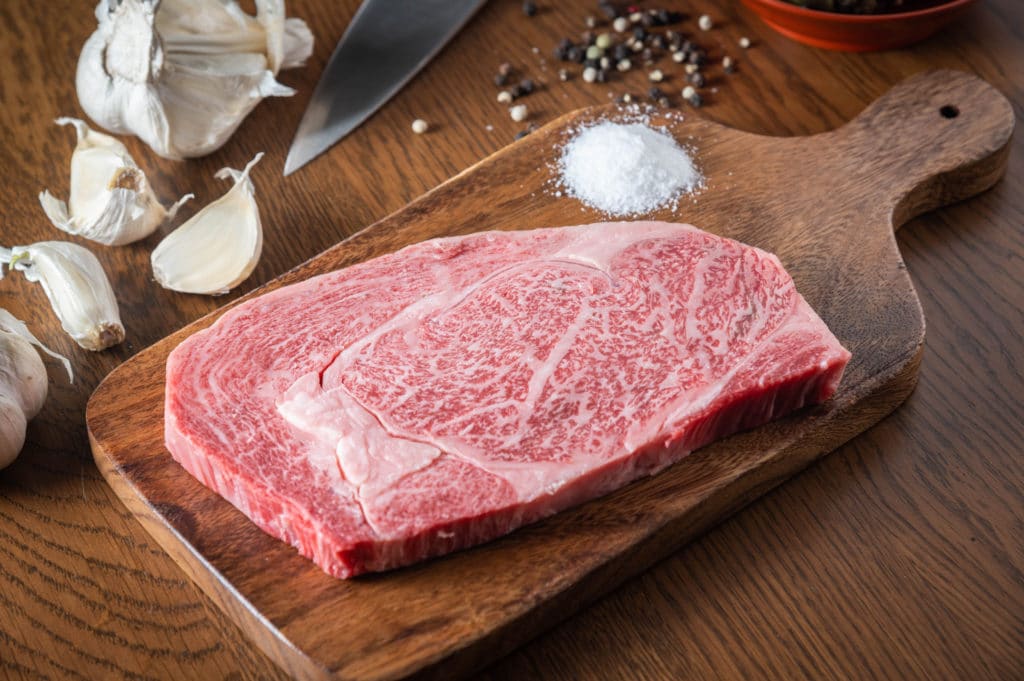Wagyu beef is renowned for its intense marbling, tender texture, and rich flavor. However, beyond the steak itself, one of the most valuable aspects of Wagyu is its fat—a highly versatile ingredient that can elevate both savory and sweet dishes. With a low melting point and a high proportion of monounsaturated fats, Wagyu fat is not just ideal for searing meats, roasting veggies, or frying—it can also be used in baking, adding a unique depth of flavor to breads, pastries, and doughs.
Instead of discarding Wagyu fat trimmings, rendering and repurposing them allows you to maximize this premium ingredient while enhancing the richness of your recipes.
Why Wagyu Fat is Special
Unlike regular beef fat, which can be heavy and waxy, Wagyu fat has a smooth, almost butter-like texture due to its high monounsaturated fat content. It melts at 77 to 86 degrees Fahrenheit, far lower than conventional beef fat, which starts melting at 104 to 122 degrees Fahrenheit. This means Wagyu fat is softer, silkier, and more palatable, making it an excellent substitute for butter, oil, or lard in many dishes.
Additionally, Wagyu fat is rich in oleic acid, the same healthy fat found in olive oil, making it a better-for-you alternative to traditional saturated fats.
Rendering Wagyu Fat for Cooking and Baking
Before using Wagyu fat in recipes, it needs to be rendered into a pure, usable form. This process separates the fat from any residual meat, leaving behind a smooth, golden cooking fat known as Wagyu tallow.
How to Render Wagyu Fat
- Prepare the Fat – Trim any excess meat from the fat and cut it into small pieces.
- Slow Heat Method – Place the fat in a heavy-bottomed pan or slow cooker over low heat. Let it slowly melt without browning.
- Strain the Liquid – Once fully melted, strain the liquid fat through a fine mesh sieve or cheesecloth to remove any solids.
- Store Properly – Let the fat cool slightly before transferring it into an airtight container. Store it in the refrigerator for everyday use or freeze it for long-term storage.
Rendered Wagyu tallow is neutral in flavor with a slightly buttery undertone, making it perfect for everything from frying and roasting to baking.
Cooking with Wagyu Fat
Wagyu fat is a powerful flavor enhancer that can transform the simplest dishes into something extraordinary.
Searing and Roasting
A spoonful of Wagyu fat can be used to sear steaks, sauté vegetables, or roast potatoes, imparting a deep, savory richness.
Frying with Wagyu Tallow
Because of its high smoke point and clean flavor, Wagyu fat is ideal for deep-frying. French fries, onion rings, and fried chicken cooked in Wagyu tallow develop a crisp, flavorful exterior with that beloved Wagyu flavor.
Making Wagyu Butter
Mix rendered Wagyu fat with softened butter, garlic, and herbs to create a Wagyu compound butter. Spread it over steak, roasted vegetables, or fresh bread for an extra layer of indulgence.
Baking with Wagyu Fat
While Wagyu fat is commonly associated with savory dishes, its silky texture and neutral flavor make it an excellent ingredient for baking. Traditionally, butter, lard, or shortening is used to provide moisture and flakiness in baked goods, but Wagyu fat can serve as a delicious substitute.
Why Use Wagyu Fat in Baking?
- Tender Doughs – Wagyu fat helps create soft, supple doughs that roll out smoothly.
- Flaky Pastries – Similar to lard, Wagyu fat can produce flaky pie crusts, biscuits, and croissants with the addition of Wagyu flavor.
- Moist Cakes and Cookies – Replacing butter or oil with Wagyu fat adds richness and depth of flavor.
- Enhanced Crumb Structure – The unique fat composition in Wagyu can improve the texture of baked goods, making them lighter and more delicate.
Baking Applications for Wagyu Fat
- Pie Crusts and Pastries – Use Wagyu fat in place of butter or lard for ultra-flaky crusts. The low melting point creates pockets of steam that yield delicate, layered textures.
- Brioche and Enriched Breads – Replace some of the butter in brioche or challah recipes with Wagyu fat for enhanced richness.
- Biscuits and Scones – Substitute shortening or butter with Wagyu fat.
- Cookies and Brownies – Add a spoonful of melted Wagyu fat to chocolate chip cookies or brownies for chewier textures and a subtle caramelized taste.
- Savory Breads and Rolls – Use Wagyu fat in dinner rolls, focaccia, or cornbread for added complexity.
How to Use Wagyu Fat in Baking Recipes
- For Butter Substitution – Try replacing up to 50% of the butter in a recipe with rendered Wagyu fat. This maintains structure while adding a subtle umami undertone.
- For Lard or Shortening Substitution – Try using Wagyu fat in a 1:1 ratio for flakier doughs and pastries.
- For Oil Substitution – Replace cooking oils with melted Wagyu fat in bread or cake batters for a softer crumb and richer mouthfeel.
Storing and Using Wagyu Fat Efficiently
Rendered Wagyu fat can be stored in an airtight container in the refrigerator for several weeks, or frozen for longer shelf life. When using Wagyu fat in cooking or baking, start with small amounts to balance flavors.
Why Wagyu Fat is a Culinary Game-Changer
Utilizing Wagyu fat in both savory and sweet dishes is an excellent way to maximize the value of this premium beef while enhancing the richness of your recipes. Whether it’s searing meats, frying potatoes, enriching doughs, or creating ultra-flaky pastries, Wagyu fat adds depth, tenderness, and umami to any dish.
By incorporating Wagyu fat into your cooking and baking, you not only elevate your meals but also reduce waste—ensuring that every part of this prized beef is fully appreciated and enjoyed.

